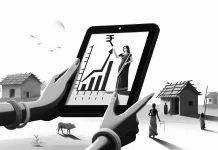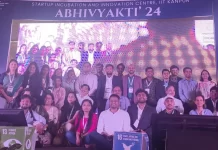

The human element has always been crucial in the business context. Be it employees or employers, customers or partners, investors or shareholders, the pervasive human element is applicable. People analytics is a structured business function to manage this element.
Research suggests that the HR leaders of tomorrow understand the importance of technology. They know how to mine insights from technology and apply them at the workplace to achieve organizational goals. As per Deloitte's Global Human Capital Trends 2016, 75% of companies agree that using people analytics is important. But only 8% express confidence of being strong in this field.
Paradigm shift in people analytics
The nature of people analytics in organizations is changing at a rapid pace. Every year, technologies used in people analytics are experiencing a paradigm shift. It is fast evolving as a profit center for organizations that are choosing to invest in and focus upon it. We look at the 6 hot trends that show how the paradigm shift in people analytics is taking place at the ground level:
Gut driven instincts to number driven decisions
Before technology took businesses by storm, leaders often relied on their gut to take important decisions. Technology and system driven people analytics has ensured that numbers supplement that gut. Take recruitment and appraisal systems, for example. Assessment of employee interviews as well as appraisals is now number driven. Online recruitment tests, and interviews conducted and recorded online are the new normal. Likewise, most mid-size and large enterprises are investing in automating performance management systems.
From general management to specific interventions
People analytics have empowered businesses to design, track, review, and execute business processes at a specific level, making them more robust and reliable. People analytics has expanded the purview of Human Resource Management Information Systems (HRMIS). HRMIS is no longer only about employee attendance, payroll and productivity. It now includes KRAs, rewards and recognition, employee engagement, performance management, compensation and benefits and more.
ERP driven intranets to SMAC driven web services
Technologies supporting people analytics have opened the web wide open for businesses but in a secure manner. Enterprises no longer need to restrict themselves to private ERP and HRMS driven data and information systems. They can instead focus on their core business by endorsing Social, Mobility, Analytics / Big data and Cloud (SMAC). SMAC is the ace quadruplet of modern technology. SMAC-based employee and client behavioral insights imparts efficiency and efficacy to people analytics.
From Ad-hoc Software to End-to-End Automation
Deriving consistent business value out of technology systems is an iterative process. Businesses themselves change and evolve over time. Thus, flexibility and dynamism are must-have features of such systems. Whether you choose to update your system in-house or seek help from a vendor, you need to ensure that your system meets your business requirements. You also need to mitigate the risk of potential system inadequacies and plan for contingency in advance. People analytics deals with data such as employee performance, compensation and benefits, employee retention, productivity, engagement rates, and more. Such a huge variety and volume of data needs an automated technology platform to be workable.
Convention driven to innovation driven rewarding
There are 4 generations of employees working across industries – the Gen X, the Gen Y, the millennials and the Gen Z. Customizing rewards and recognition for such a diverse group is easier said than done. People analytics helps you analyse which type of rewards appeal to which segment of employees. A certificate, cash and a memento might be good enough for a Gen X employee. But a tech-savvy, Gen Z employee might prefer experiences over tangible rewards.
Structure driven to culture driven
The modern employee prefers a work culture filled with fun, broad guidelines and friendly policies. They prefer creative freedom and flat structures over bureaucracy and hierarchies. People analytics pin-points the benefits and drawbacks while designing the organizational structure and policies. Further, employee-centric culture makes your business more responsive and adaptive towards change.
People analytics as a function is cross-sectional by design. It applies wherever there are people involved. Employees are important stakeholders and there is a need to engage them more. Employee engagement specialists and solution providers such as Xoxoday ensure that enterprises leverage both technology-based gamification as well as innovative rewards and recognition for sustainable employee engagement.
The future belongs to businesses that grow in an inclusive manner. So, organizations cannot afford to undermine the importance of people analytics.
The author is co-founder of Xoxoday. Views are personal.





